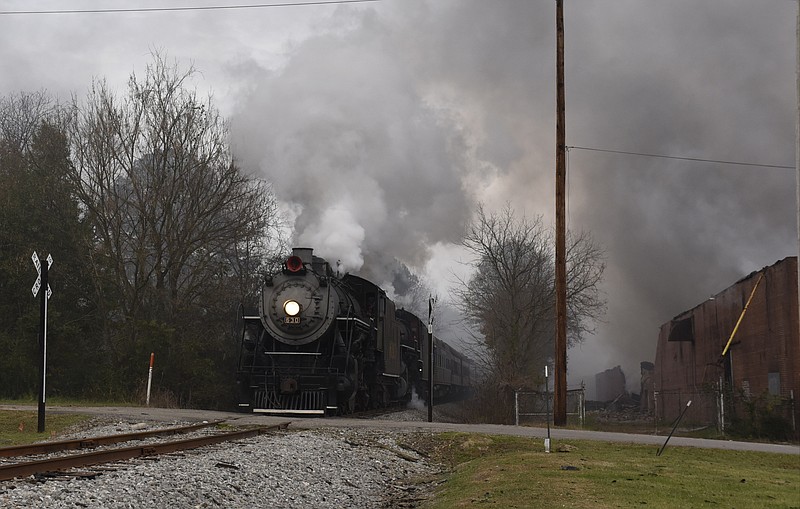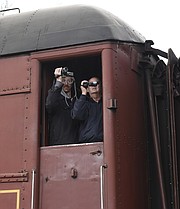LAFAYETTE, Ga. - The day after a fire ravaged the former Barwick Mills plant in the heart of downtown LaFayette, efforts turned from fighting flames to finding out what the environmental toll of the blaze could be.
That picture remained partly hazy Sunday night, just like the sky over LaFayette, where smoke continued to billow from the more than 50,000-square-foot building that caught fire Saturday afternoon.
Officials from the U.S. Environmental Protection Agency's Atlanta office spent Sunday testing the air and water and recommended to city officials early Sunday evening that people who live near the old mill be told to stay indoors Sunday night.
LaFayette officials acted on the recommendation, using the city's reverse 911 system to call those living near the mill.
The stance was precautionary - mainly out of concern for people with respiratory issues - but it represented a change from just hours before, when officials said preliminary reports showed the air quality was fine.
Brian Engler, who directed the EPA's operations Sunday, said the concern stemmed from fluctuating levels of particulates.
It was not clear Sunday night what chemicals were comprising the particulates, but officials did pinpoint where they were coming from.
During the fire, part of the roof collapsed on some of the burning material, creating a smoldering effect and preventing firefighters from extinguishing that portion of the blaze.
"Smoldering often produces more particulate matter than you would get from an actual fire," Engler said.
At some point, firefighters shut down their hoses and stopped pouring water on the blaze, saying the fire was controlled and would not spread.
An excavator is expected at the site today to remove the collapsed roof, which officials believe will stop the smoldering.
The cause of the fire was still under investigation Sunday.
As of Sunday night, there were no known injuries as a result of the fire, but dead fish had been reported in the Chattooga River, which flows south near the mill.
Most of LaFayette's water comes from north of town or from wells, City Manager David Hamilton said, but the city was relying on the well water Sunday out of caution. LaFayette's wastewater treatment facility, mere yards from the mill, was collecting much of the runoff from the building.
To the south, Chattooga County's sole commissioner could not be reached for comment, but Engler said the county's water supply should be fine since its water comes from a tributary of the Chattooga River and not the river itself.
The EPA also tested for volatile organic compounds and carbon monoxide, among other things, and Engler said some were detected but not enough to cause concern.
He said the high particulate readings could have simply been from smoldering wood, and Hamilton hoped residents wouldn't overreact to the stay-indoors recommendation.
Gilbert Elementary School in LaFayette announced it will have recess inside today.
"Obviously, it's not something that requires evacuation or a shelter," said Hamilton, who was on the scene most of the day. "It's just the levels have been sporadically coming and going, so it's just a precautionary measure, really.
"The unfortunate part is that it's going to create some undue panic. The wider the call goes out, the more people are going to be concerned, but it's the right thing to do. We need to let people know what's going on."
At the height of the blaze Saturday, Hamilton estimated 10 firefighting agencies were on scene assisting, and locals did what they could to help Sunday as smoke continued to pour from the World War II-era building where previous generations of LaFayette residents worked.
Hamilton has been told it was the largest carpet plant in the world when E.T. Barwick built it.
"Mister Barwick did a lot, invested a lot to help build our wastewater treatment facility," Hamilton said. "He did that to handle, primarily, his industrial waste."
Contact staff writer David Cobb at dcobb@timesfree press.com or 423-757-6249.

